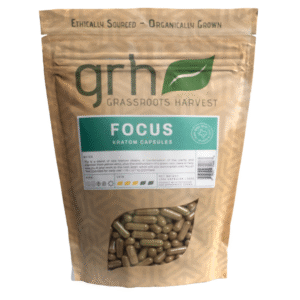Kratom (Mitragyna speciosa) is a tropical tree native to Southeast Asia, primarily found in countries like Thailand, Indonesia, and Malaysia. Though it has only gained significant attention in the West recently, it has long been a part of traditional Asian cultures. For centuries, this plant has been utilized for various purposes, including recreational and practical uses. To understand how Kratom evolved from a well-known traditional herb in Southeast Asia to a debated botanical in the United States, let’s dive deeper into its journey.
Originally, Kratom thrived naturally in Southeast Asia’s wild, tropical forests. Early in the 20th century, people in Thailand began cultivating the plant to take full advantage of its leaves. While some Southeast Asian countries have strict regulations on its cultivation and distribution, Kratom is now grown widely throughout the region.
In Thailand, for instance, Kratom was legalized for medicinal purposes in 2018, yet much of the Kratom supplied to the U.S. still comes from Indonesia. The cultivation of this plant remains highly regulated, but it continues to flourish in Southeast Asia.
The origins of Kratom’s use in Southeast Asia are steeped in history. The plant has been a part of the region’s cultural fabric for centuries, used by local communities as a traditional remedy for various purposes. Kratom leaves were commonly chewed or brewed into tea to help manage physical strain and promote relaxation.
Beyond its practical uses, Kratom holds cultural significance in some Asian societies. It has been utilized in rituals and community gatherings, where it was considered a plant with special qualities. In rural areas, laborers would chew the leaves to enhance productivity, while people often drank Kratom tea in social settings.
While its precise ancient roots remain uncertain, it’s clear that Kratom has played a significant role in the culture and traditions of Southeast Asia for generations.
Kratom made its first appearance in Western literature during the early 19th century. Dutch botanist Pieter Willem Korthals is credited with documenting the plant during his studies in Southeast Asia. His research, which noted the plant’s growth patterns and applications, paved the way for further interest in Kratom.
However, despite initial scientific curiosity, it wasn’t until the 21st century that Kratom gained wider recognition in the West, particularly for its reported benefits. Initially, Western understanding of Kratom was limited, with some associating it with negative perceptions. Over time, as more people began exploring the plant’s potential, views shifted, and it became seen by some as a natural supplement.
In the United States, Kratom’s legal standing is a topic of debate, varying from state to state. At the federal level, the substance remains unregulated, though it has come under scrutiny by authorities. Some states have banned its sale, while others have allowed its use, leading to a complex legal landscape.
Kratom’s rise in popularity in the U.S. can be attributed to its promotion as a natural supplement. However, due to ongoing regulatory discussions, the future of Kratom’s status in the U.S. remains uncertain. As of 2024, Kratom is still legal in many states, but concerns about its safety have led to increasing scrutiny.
The future of Kratom in the U.S. continues to spark debate. Advocates of Kratom argue for more research into its potential benefits, while critics call for tighter regulations. With the Kratom Consumer Protection Act under consideration, supporters hope that stricter rules will ensure the availability of safe and uncontaminated products.
As of 2024, the debate over Kratom’s safety remains ongoing, with research continuing to examine its effects. The outcome of regulatory efforts and scientific studies will ultimately shape its legal standing and accessibility in the coming years.
Today, Kratom’s uses have expanded beyond Southeast Asia. In modern times, people use the plant for various reasons, with some considering it an energy booster and natural stimulant. It is commonly consumed as a powder mixed into drinks or food, or in capsules, which offer a convenient, pre-measured dose without the bitterness of the raw leaf.
Kratom tea remains a favored method of consumption, allowing users to prepare and enjoy the plant in a familiar and accessible form. Additionally, concentrated extracts are available, providing a potent option for experienced users looking for a stronger dose.
The effects of Kratom can vary widely depending on how it is consumed and the dosage taken. Therefore, it is always recommended to start with small amounts and adjust gradually.
Kratom’s rise in popularity, from its origins in Southeast Asia to its modern-day prominence in the West, is a testament to its evolving role in both cultural and consumer contexts. Despite the controversies surrounding its use, its influence in the U.S. and around the world cannot be denied.
While the future of Kratom remains unclear, it’s evident that this plant has captured the attention of many. Ongoing research and regulatory decisions will continue to shape its journey, but for now, Kratom’s place in the global market remains strong.
For those seeking high-quality Kratom products, GRH Kratom stands out as a trusted source. With a commitment to providing premium offerings and reliable information, GRH Kratom is dedicated to supporting users on their journey. We encourage you to visit our website for a comprehensive look at our products and to find contact information for any inquiries you may have. Your exploration of Kratom starts here!



